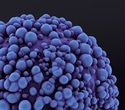A new medication created by scientists at the University of East Anglia combats all of the major subtypes of primary bone cancer.
Children are more likely to develop bone cancer than cancer that has already spread to the bones.
The current course of treatment is arduous and includes limb amputation and antiquated chemotherapy regimens.
Despite this, the five-year survival rate is dismal at only 42%, in large part due to how quickly lung cancer spreads from bone cancer.
However, in mice implanted with human bone cancer, a new study published today demonstrates how a drug called “CADD522” blocks a gene linked to the cancer’s spread.
The ground-breaking medication boosts survival rates by 50% without requiring surgery or chemotherapy.From 19 patients at the Royal Orthopaedic Hospital in Birmingham, the team took bone and tumor samples. But even with such a small sample size, the cancers’ clear changes could be seen.
The group used next-generation sequencing to discover different small RNA types that acted as genetic regulators throughout the development of bone cancer.
Additionally, they demonstrated that primary bone cancer activates the RUNX2 gene, which is linked to promoting the spread of the disease.
They then tested the new drug CADD522, a small molecule that prevents the RUNX2 protein from having an impact, on mice.
“In preclinical studies, metastasis-free survival was increased by 50% using,” said Dr. Green.”Importantly, because the RUNX2 gene is not usually required by normal cells, the drug doesn’t cause side effects like chemotherapy.
“This breakthrough is really important because bone cancer treatment hasn’t changed for more than 45 years.
“The new drug that we have developed is effective in all of the main bone cancer subtypes, and so far, our experiments show that it is not toxic to the rest of the body. This means that it would be a much kinder treatment for children with bone cancer, compared to the grueling chemotherapy and life changing limb amputation that patients receive today.
“We hope it will save a lot of lives,” he added.
The drug is now undergoing formal toxicology assessment before the team assemble all of the data and approach the MHRA for approval to start a human clinical trial.
The research was led by UEA in collaboration with The University of Sheffield, Newcastle University, the Royal Orthopaedic Hospital, Birmingham, and the Norfolk and Norwich University Hospital.





